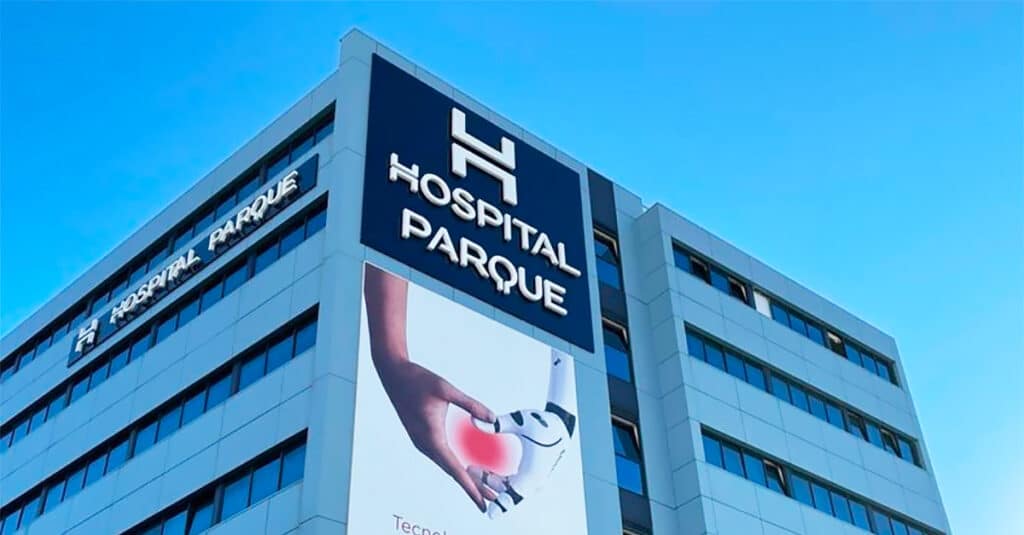Your 360° healthcare solution
Sfere Health Management Software
Access and manage all your healthcare data and processes from one single application covering all aspects of care delivery. Discover the latest technology in medical record management.
What is Sfere?
Healthcare providers of all kinds have been under great pressure in the last years. Becoming more efficient in their processes and having better visibility to manage bed capacity or medicine stock have never been so crucial.
And, of course, providing the best care possible to their patients, regardless of the type of organisation – hospitals, clinics, nursing homes, research centres, assisted living facilities, etc. – remains a top priority.
Sfere is the result of Getronics’ more than 25 years of experience in healthcare. From admission to discharge, it offers everything care providers need to deliver better patient care.
The result is fewer errors and timely interventions to reduce risks in critical areas. It also helps health organisations to control and improve all billing processes while increasing profitability, through complete visibility of the expenses associated with the patient’s stay.
Sfere covers the following areas of care delivery:
- Administrative
- Clinical
- Financial
- Departmental

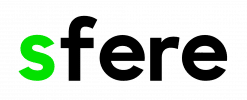
What makes us unique?
With so many options on the market, here are a few reasons to choose our software.
While being an end-to-end health software, Sfere offers individual applications for each process, meaning it can adapt to any health organisation, of any size, and to any process.
Your processes, information, and patients’ data will remain secure thanks to Sfere. Developed with Getronics’ secure-by-design approach, we ensure your business, customers, and patients are protected at all times while meeting all compliance requirements.
Getronics has over 25 years delivering applications and solutions for healthcare providers in Europe and Latam, and we continue to develop and improve our solutions to meet the changing needs of the sector.
98%
Software occupancy within clients
1m+
Patients
every year
2,000+
Forms
and reports
Getronics & Grupo Hospitales Parque
Getronics supports the Grupo Hospitales Parque, belonging to Caser Grupo Helvetia, in the unification of their Health Information System (HIS) into a single system in order to improve patient care. Learn more about how we implemented Sfere.
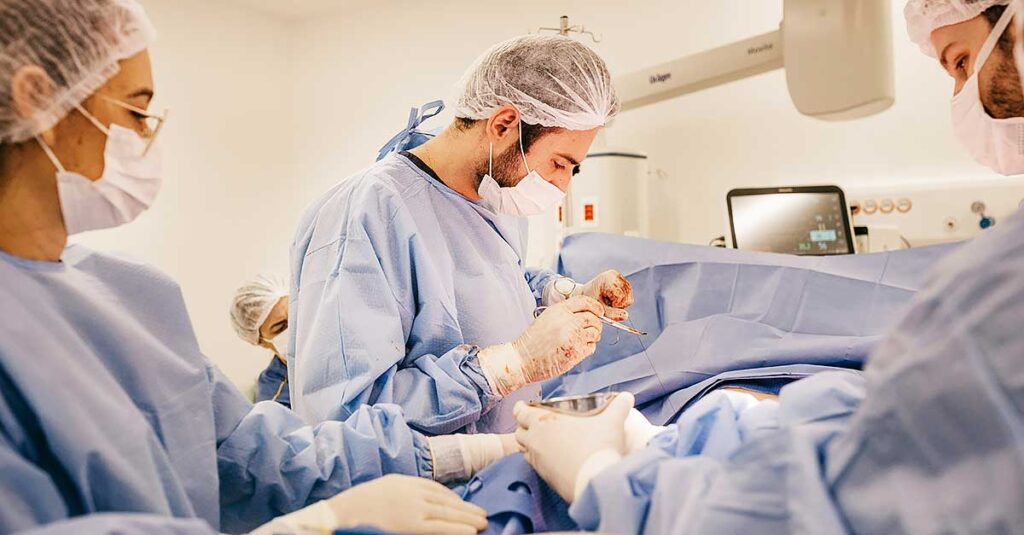
Administrative Management Applications
It covers all the administrative processes and workflows related to patient care. These include patient tracking, scheduling and appointments, prescriptions, management of operation theaters, etc., to optimise patient care and manage all related documentation.
The Admission module allows, primarily, to perform all necessary actions to efficiently manage the admission of users to the hospital and their stay within it.
• Management of the user database and associated data.
• Management of pre-admissions and reservations.
• Management of admissions for Hospitalization, Emergency, Ambulatory Surgery, Surgical Waiting List, and External Consultations.
• Access to agenda scheduling.
• Bed and Inpatient Management.
• Inquiry of admissions, discharges, and stays.
• Inquiry of the location, status, and occupancy of hospital beds.
• Generation of lists and statistics.
• Detection of cases requiring special surveillance.
• Administrative history of the patient.
The main objective of the External Consultations module is to record and manage all aspects related to Demand Management and the doctor’s Activity Management in the consultation.
• Management of doctors’ schedules and the activities attended to in the consultation.
• Management of all appointment requests. It allows for multiple appointment modalities: patient appointment, optimal appointment, extraordinary appointment, multi-appointment, and urgent appointment.
• Schedules offered for the web and for companies.
• Management of on-call schedules.
• Management of appointment patterns.
• Management of incompatibilities between activities.
• Management of deferred appointments, notifications, and appointment rescheduling.
• Management of the doctor’s activity in the consultation.
Operating Room Management encompasses the management of, on one hand, Patient Reception (URPA), Surgical Intervention (Operating Room), and Resuscitation/Readaptation (URPA), and on the other hand, waiting lists, and planning and scheduling of interventions.
• Operating room planning, allowing for streamlining tasks through the use of patterns.
• Scheduling of interventions and operating room reservations.
• Intervention protocols and OMC groups.
• Management of the surgical waiting list and rescheduling.
• Patient reception and transition to the operating room. Use of a touch console.
• Management of the URPA bed map and its activity.
• Consultation of the operating room whiteboard.
• Validation of Drag & Drop operating table.
• Operating room data sheet (Operating sheet).
• Information on operating room performance.
The touch console features an agile and interactive interface supporting the recording of all activities performed on the patient during the surgical intervention or emergency room care process without interfering with surgical activities.
• Presentation of patient information to involved parties.
• Real-time recording of all actions and requests in the operating room on a timeline graphic.
• Personalized use for each team member.
• Instant notification of received results from requested tests.
• Ischemia control timers.
• Access to the vital signs, medication, inputs, and losses graph.
• Recording of information related to the anesthetic process.
Encompasses the recording of activities from the Patient’s admission until they leave the Service, whether to return home, be transferred to the Inpatient Service, moved to another facility, due to exitus, voluntary discharge, or elopement.
• Monitoring of patient care and follow-up.
• Management of administrative, medical, and nursing staff tasks.
• Information on the patient’s status, location, and position within the emergency service.
• Triage management with various algorithms (ESI, SET-MAT…).
• Access to the touch console for Emergency interventions.
• Dashboard.
• Alerts and clinical pathways.
• Occupancy management.
• Listings.
The Coding and CMDB module encompasses the coding of diagnoses and procedures for episodes, as well as the tool for generating the CMDB file.
• Searches for episodes, diagnoses, and procedures.
• Searches for mixed templates of diagnoses and procedures.
• Maintenance and debugging of episode data.
• Maintenance of variables to be coded (types of episodes, hospital areas, funding data, etc.).
• Episode coding. Possibility to indicate mandatory fields.
• Configuration of the CMDB file, allowing the definition of structure and composition.
• Generation of the CMDB file.
The File Management module is responsible for the maintenance and management of patients’ paper Medical Records.
• Location of medical records.
• Management of the entry/exit of records through assignment or change of location.
• On-demand record loans.
• Management of medical record numbers.
• Management of confidential or specially guarded records.
• Merging of medical records and family histories.
• Inquiry and modification of patient data.
• Inquiry of performed movements.
• Labeling and evaluation.
• Listings.
The Day Hospital module manages the administration of medical and surgical processes that do not require inpatient stay.
• Scheduling of medical day hospital treatment sessions (dialysis, chemotherapy, etc.).
• Management of patient admission/discharge in the Day Hospital.
• Complete management of the room’s activities.
• Attendance monitoring for patients.
• Prescription and administration of treatments.
• Evolution and follow-up of patients.
• Prescription management.
• Billing for treatments.
• Listings.
The Pregnancy and Childbirth module allows for monitoring the patient’s pregnancy, the childbirth process, and the control of newborns.
• Management of the patient’s visit calendar based on the type of pregnancy.
• Health Document for the Pregnant Woman.
• Scheduling appointments for pregnancy monitoring.
• Reception of the patient for childbirth preparation.
• Management of the childbirth process through the Obstetric Sheet.
• Real-time monitoring of childbirth through the Obstetrics Console.
• Follow-up of the mother and newborns after childbirth.
The Primary Care module allows for the management of everything related to health plans and programs, vaccination schedules, vaccination plans, and the recording of vaccine administration.
• Management of the Immunization Health Program (vaccines).
• Management of definitions, types, and batches of vaccines and laboratories.
• Appointment management.
• Vaccination record.
• Vaccines according to the vaccination plan.
• Isolated vaccines.
• Search for target populations to be vaccinated, vaccinated individuals, and those pending vaccination.
• Referral of primary care patients to specialized care.
• Access to the unified electronic health record of the patient.
The Audit module allows for the management of patient information, ensuring that an auditor operator can access relevant data but not any other clinical or administrative information.
• Classification of patient-related information.
• Provides the possibility to conduct audits:
• Internal: conducted by personnel from the organization itself.
• External: conducted by financial or insurance entities.
• Generation of auditor reports through a powerful reporting engine.
• Retrieval of lists of records per day and per episode.
• Logbook: allows for a sorted list of events of interest for medical auditing.
It enables the efficient management of patients with disabilities in the early intervention area, educational care, or adults with intellectual disabilities, providing tailored monitoring for each patient through the Individualized Treatment Plan tool.
• Conducting patient assessment and intake interviews. Drafting and attaching documents. Management of accepted and canceled requests.
• Management and scheduling of agendas.
• Monitoring attendance at therapeutic sessions, occupational workshops, and external activities.
• Development of the Individualized Care Plan, encompassing the patient’s needs in different areas.
• Generation of goals and activities to monitor the patient’s progress.
• Evaluation of activities for each patient or joint evaluation of multiple patients.
• Reassessment of the Individualized Treatment Plan.

Support Units Applications
This module includes all applications for managing the support units in a health facility. These include operations and central services, such as rehabilitation, pharmacy, and sterilisation. The information handled can be administrative or functional.
Management of medications, their characteristics, and distribution. Provides real-time information on medication demand within the facility and prescribed medications. Manages carts, and ward cabinets, and notifies of pharmaceutical material consumption and returns.
• Comprehensive management of the facility’s medication catalog.
• Configuration of elements related to medication or its prescription: active ingredients, excipients, interactions, administration routes, guidelines, medication protocols, etc.
• Treatment management. Pharmaceutical consultation and validation of treatments and consumption.
• Medication distribution using two methods: prescriptions and prescriptions.
• Configuration of carts, delivery, review, update, return, excess, labels, etc.
• Control of dispensing of outpatient and chronic prescriptions.”
This module carries out the registration and management of all activities in the operation of diagnostic auxiliary services.
• Definition and planning of schedules for complementary explorations.
• Management of the catalog of available diagnostic tests.
• Request (solicitation) management.
• Management of deferred appointments.
• Auxiliary Service management.
• Sample identification.
• Reporting and result generation.
• Management of mass appointment notifications by letter (mailing), email, or SMS.
• Management of alerts and warnings for incompatibilities.
This module allows for the control of items that require sterilization in each facility, ensuring a safe and infection-free environment.
• Definition and configuration of sterilizable material (items, packaging).
• Reception and management of material to be sterilized.
• Console for the input and output of items for daily distribution. Allows the exchange of items to be sterilized with items already sterilized in each functional unit.
• Management of washing, packaging, and sterilization of materials.
• Biological control of machines.
• Patient traceability of sterilized material.
• Generation of monthly and annual reports on sterilized material.
This module enables effective management of all activities related to the planning and execution of rehabilitation treatments and sessions.
• Configuration of schedules.
• Treatment prescriptions.
• Appointment scheduling based on saturation criteria, days of the week, etc.
• Waiting list management for unscheduled sessions.
• Control of the treatment life cycle: freezing, resumption, modification, extension, treatment history, etc.
• Management of room work: activities, treatments, and sessions.
• Maintenance of pathological profiles, shifts, external physicians, etc.
• Generation of listings and statistics.
This module allows for the registration and management of all aspects related to assigned diets for both admitted patients and their companions.
• Definition of ingredients, dishes, menus, and diets.
• Evaluation and prescription of diets: special diets, mini-menus, conditioned diets, protocols.
• Control of diet interactions with allergies, diagnostic tests, etc.
• Management of enteral nutrition prescriptions and calculation of nutritional information.
• Meal preparation in the kitchen: diet and dish board, broken down by hospitalization areas.
• Recording of distributed dishes.
• Integration with Blockchain for diet control.
The Indicators and Dashboards module allows for the retrieval of accurate real-time hospital data (indicators) that can be immensely helpful in efficiently managing various logistical, functional, organizational, and temporal aspects of the hospital.
• Configuration of specific Indicators for a hospital.
• Configuration of Dashboards, or grouping of indicators.
• Retrieval of Indicators and Dashboards from the product or designed by the hospital itself.
• Disaggregation of indicator information by centre, service, date range, etc.
• Exporting disaggregated information to a spreadsheet for obtaining additional statistics.
• Statistical indicators. Reports associated with multiple indicators.

Clinical Management Applications
This module manages all clinical services and processes provided to patients, based on Electronic Medical Records (EMR). It covers the entire medical and nursing care practices, with accurate diagnosis and patient care at the core.
The Medical Workstation provides healthcare professionals with ubiquitous access to the resources needed to optimize their clinical activities through a highly visual interface.
• Comprehensive management and information related to patient care and their Medical History and associated documents.
• Among others: Consultations, referrals, medical history, mandatory reporting diseases (EDOS), charts, transfusions, prescriptions, allergies, vaccines, etc.
• Request and results of additional explorations to other Services.
• Integration of information from external systems.
• Process management.
• Progress note management.
• Import/Export of Medical Histories in HL7/CDA format.
Covers, based on the beds, the recording of activities performed from the Patient’s admission until they leave the Service.
• Bed assignment to each nurse.
• Patient and bed management: transfers, exchanges, temporary exits, patient status and location, change of Service/Physician, prescriptions, diets, requests to other services, etc.
• Access to the nursing chart. Monitoring vital signs, medication, input, output, and fluid balance.
• Assignment and planning of assessments and standard plans for each patient. Generation of the patient care plan.
• Visual and multi-patient activity management.
• Lists: nursing activities, reassessments, medication, etc.
• Material and first aid kit management. Batch control.
It is designed to be the workspace for intensivists and ICU nursing staff, facilitating the care of patients in need of intensive care.
• Real-time overview of the ICU status.
• Touchscreen console for bedside use.
• Vital signs charts integrated with devices.
• Real-time calculation of fluid balance.
• Request for diagnostic tests and visualization of results.
• Medication recording and integration with infusion pumps.
• Recording of medical progress notes.
• Evolution of laboratory tests (blood gases, creatinine, potassium…)
• Automated calculation of daily Apache score.

Financial Management Applications
A key module for the collection and consolidation of all billing, cost allocations, and financial processes related to all activities, staff and resources at a health centre. It also allows payment information to be handled transparently throughout the care process and patient’s stay.
The module provides the necessary tools for invoicing healthcare activities carried out for both insurers and individuals, also covering the generation of professional fees payable to the clinical staff of the centre.
• Multi-company billing with independent numbering series.
• Management of insurance entities and price rates.
• Management of packages or flat rates.
• Budget management.
• Automatic and manual consumption allocation.
• Grouping of billing concepts into categories (e.g., inpatient medication).
• Ability to group multiple episodes into records.
• Handling of delivery notes and their consolidation into invoices.
• Merging of delivery notes.
• Billing by clinical episode, insurance entity, or by record, with multi-centre and multi-company capabilities.
The Billing module provides the necessary tools for invoicing healthcare activities carried out for both insurers and individuals, also covering the generation of professional fees payable to the clinical staff of the centre.
• Generation of collective invoices by concepts for an entity (general invoicing).
• Generation of electronic billing files for integration with insurance entities that allow it.
• Management of already generated invoices and delivery notes.
• Generation and payment of medical fees based on fixed amounts, percentage of billing, or related to the profit obtained.
• Billing by tiers and MIX.
• Recording of authorizations on generated invoices.
• Handling of contributions, credits, and fixed concepts.
• Cost/income analysis per invoice with the ability to determine profit before fee payment.
• Generation of lists and reports.
Enables tracking of the payment of issued invoices, both from individuals (cash) and insurance entities (payment batches), integrated with payment methods.
• Shift management.
• Management of decentralized cash registers and treasury.
Opening and closing of cash registers.
• Cash reconciliation process. Control of transfers between cash registers.
• Control of advance payments.
• Possibility of partial or total collections, considering advances.
• Management of refunds for payments made on an invoice.
• Management of payment statuses, at the invoice and invoice line levels.
• Management of claims and notifications of non-payment.
• Full and partial refund of issued invoices.
• Management of payment batches for entities.
• Mass collection of invoice batches.
Getronics has processed, through the DGIS (General Directorate of Health Information, Mexico), the obtaining of an OID. As a result of these actions, the OID has been obtained and is used in the management of clinical documents handled by the Sfere information system.
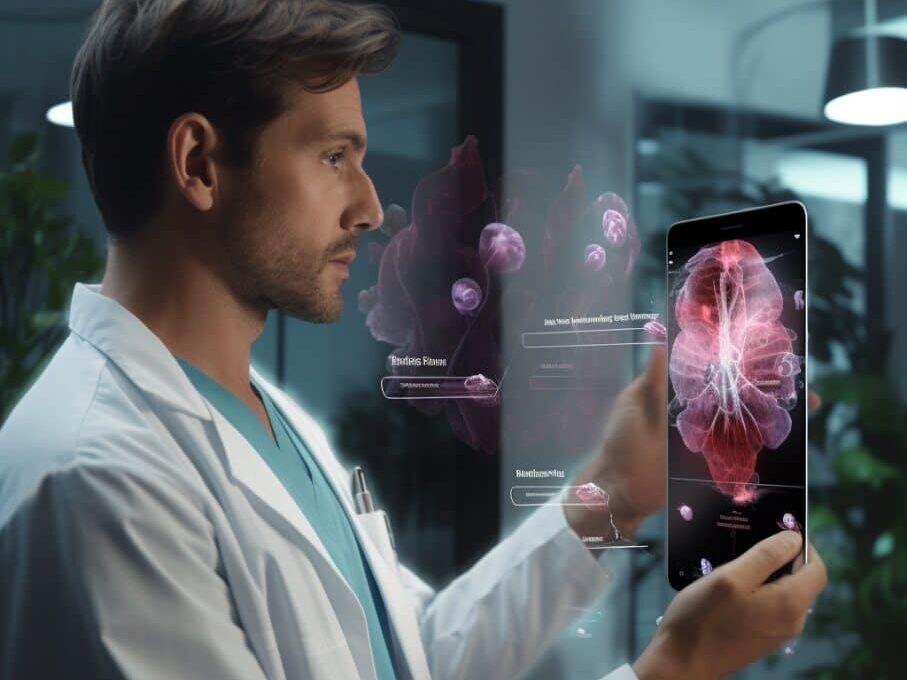
From Diagnosis to Treatment: The role of AI in modern medicine
The evolution of AI in medicine has not only showcased the potential of cutting-edge technology to revolutionise healthcare but also presented a set of challenges that need to be addressed.
Request a demo
Talk with one of our experts
Discover Sfere in a personalized demo session, the latest and most innovative technology in medical record management.
Fill out the form, select the service Business Applications, and indicate in the details field that you want to be contacted by one of our experts to have a personalized Sfere demo.
